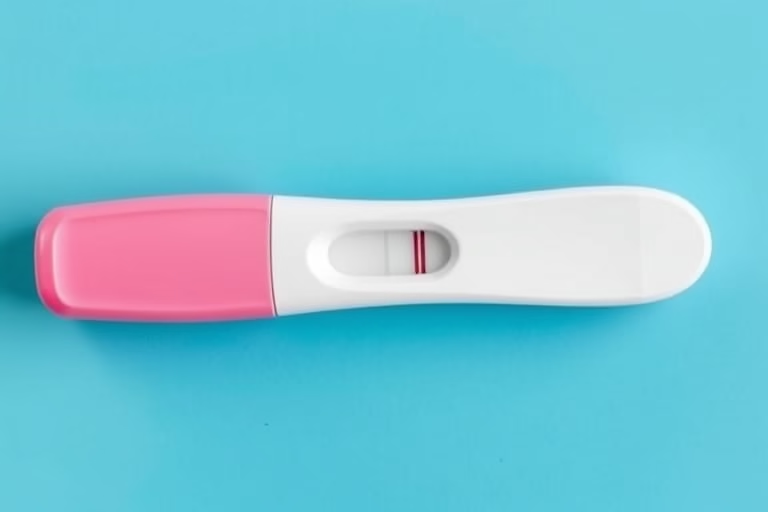Understanding Implantation Bleeding
Implantation bleeding refers to the light spotting some women experience when a fertilized egg attaches itself to the uterine lining. This process usually occurs about six to twelve days after conception. Recognizing when this occurs can be crucial for women who are trying to conceive, as it can signal the early stages of pregnancy. While some may confuse it with a menstrual period, implantation bleeding is typically much lighter in color and flow.
Many women wonder about the best time to take a pregnancy test after experiencing implantation bleeding. Understanding the timing is essential for accuracy. A pregnancy test measures the level of human chorionic gonadotropin (hCG) in the urine, a hormone produced shortly after a fertilized egg implants in the uterus. Testing too early can lead to a false negative, as the hCG levels may not be high enough to detect early in pregnancy. Therefore, knowing when it is appropriate to take a pregnancy test post-implantation bleeding is crucial.
Signs of Implantation Bleeding
Identifying implantation bleeding requires an understanding of its characteristics. Unlike menstrual bleeding, which is usually heavier and accompanied by cramping, implantation bleeding is often lighter and shorter in duration. It may appear as small spots of blood, primarily brown or pink in color. Symptoms accompanying this could include slight cramping, but they are generally much milder than menstrual cramps.
To summarize, the signs of implantation bleeding include:
- Light spotting
- Fading pink or brown color
- Short duration, typically lasting a few hours to a couple of days
- Mild cramping
Timing of Pregnancy Tests after Implantation Bleeding
After experiencing implantation bleeding, many women are eager to take a pregnancy test. However, timing is key to obtaining accurate results. It is generally suggested to wait at least three to five days after implantation bleeding. This delay allows for the hCG hormone levels to rise to detectable levels in the urine.
A more effective approach is to wait until the first day of a missed period. Most urine pregnancy tests claim to be up to 99% accurate when taken on the first day of a missed period. Testing too early, especially before the body has had time to produce enough hCG, can lead to the disappointment of a false negative result. This is often the case for women who are anxious to know whether they are pregnant.
Types of Pregnancy Tests
There are primarily two types of pregnancy tests available: urine tests and blood tests. Each has its own method of detection, as well as pros and cons. Urine tests are the most common and can be done at home. Blood tests, which are performed in a healthcare setting, can detect pregnancy earlier than urine tests.
Here is a breakdown of the two:
- Urine Tests: Easy to use, provide quick results but may require waiting until after the expected period for best accuracy.
- Blood Tests: More sensitive than urine tests and can detect pregnancy earlier but often require a visit to a healthcare provider.
Interpreting Pregnancy Test Results
Once a pregnancy test is taken, interpreting the results is the next step. Home pregnancy tests usually indicate a positive result with two lines or a plus sign, while a negative result appears as one line or a minus sign. It is crucial to follow the instructions on the test package carefully.
If the test is negative but symptoms of pregnancy persist or if there is uncertainty, it is advisable to repeat the test a few days later or consult with a healthcare professional. Factors such as expired tests or incorrect usage can lead to inaccurate results.
Understanding False Negatives
False negatives can be a common occurrence for women taking pregnancy tests too early. If testing occurs before sufficient hCG levels have built up, the result may inaccurately reflect a negative result. Common reasons for false negatives include:
- Taking the test too early
- Using an expired test
- Not following the instructions correctly
- Diluted urine, such as after drinking excessive fluids
For best results, testing with the first morning urine is recommended, as it contains the highest concentration of hCG. If the test is negative, but the menstrual cycle does not resume within a week, retesting or seeking medical advice is wise.
Emotional and Physical Impact of Early Pregnancy Signs
Experiencing early signs of pregnancy, such as implantation bleeding, can be an emotional roller coaster. Women may feel excitement, anxiety, or uncertainty. It is essential to manage emotions through support from family, friends, or a counselor.
Additionally, some women might experience physical changes in early pregnancy. This can include mild cramping or tender breasts. Recognizing that these signs could indicate pregnancy, while being mindful of mental well-being, is vital for those trying to conceive.
Final Thoughts
Understanding when to take a pregnancy test following implantation bleeding is crucial for anyone trying to conceive. Recognizing the signs of implantation bleeding can help differentiate it from a regular menstrual period, providing important context for when to test for pregnancy. It is often suggested to wait at least three to five days after implantation bleeding to ensure accurate results. Checking at the time of a missed period increases the reliability of the test result.
The two primary types of pregnancy tests available, urine and blood tests, have varying degrees of sensitivity. How results are interpreted plays a key role in recognizing pregnancy signs. In cases of uncertainty, especially with false negatives, retesting or consulting a healthcare provider is strongly advised.
Bettering emotional responses throughout this process is a vital aspect of the journey toward pregnancy. Whether through support systems or professional guidance, taking care of mental health holds great importance.
Ultimately, every woman’s experience is unique, and understanding one’s body can greatly assist in the journey toward conception. Being informed about the timing and methods of pregnancy testing can lead to better outcomes and minimized anxiety.
Frequently Asked Questions
1. Can you take a pregnancy test immediately after implantation bleeding?
No, it is recommended to wait at least 3 to 5 days after implantation bleeding for accurate results.
2. What does light spotting mean?
Light spotting can often indicate implantation bleeding, but it may also signify other conditions. It’s worthwhile to monitor the situation and consult a healthcare professional if needed.
3. How soon can a blood test confirm pregnancy?
Blood tests can detect pregnancy about 6 to 8 days after ovulation or implantation.
4. What if I test negative but still feel pregnant?
If you test negative but suspect pregnancy, it is advisable to wait a few days before testing again or consult a healthcare provider.
5. Can stress affect test results?
While stress does not change the test results directly, excessive anxiety can lead to user error when performing a pregnancy test, affecting its accuracy.
Further Reading
What Type of Psychotherapy Is Best for Anxiety?







